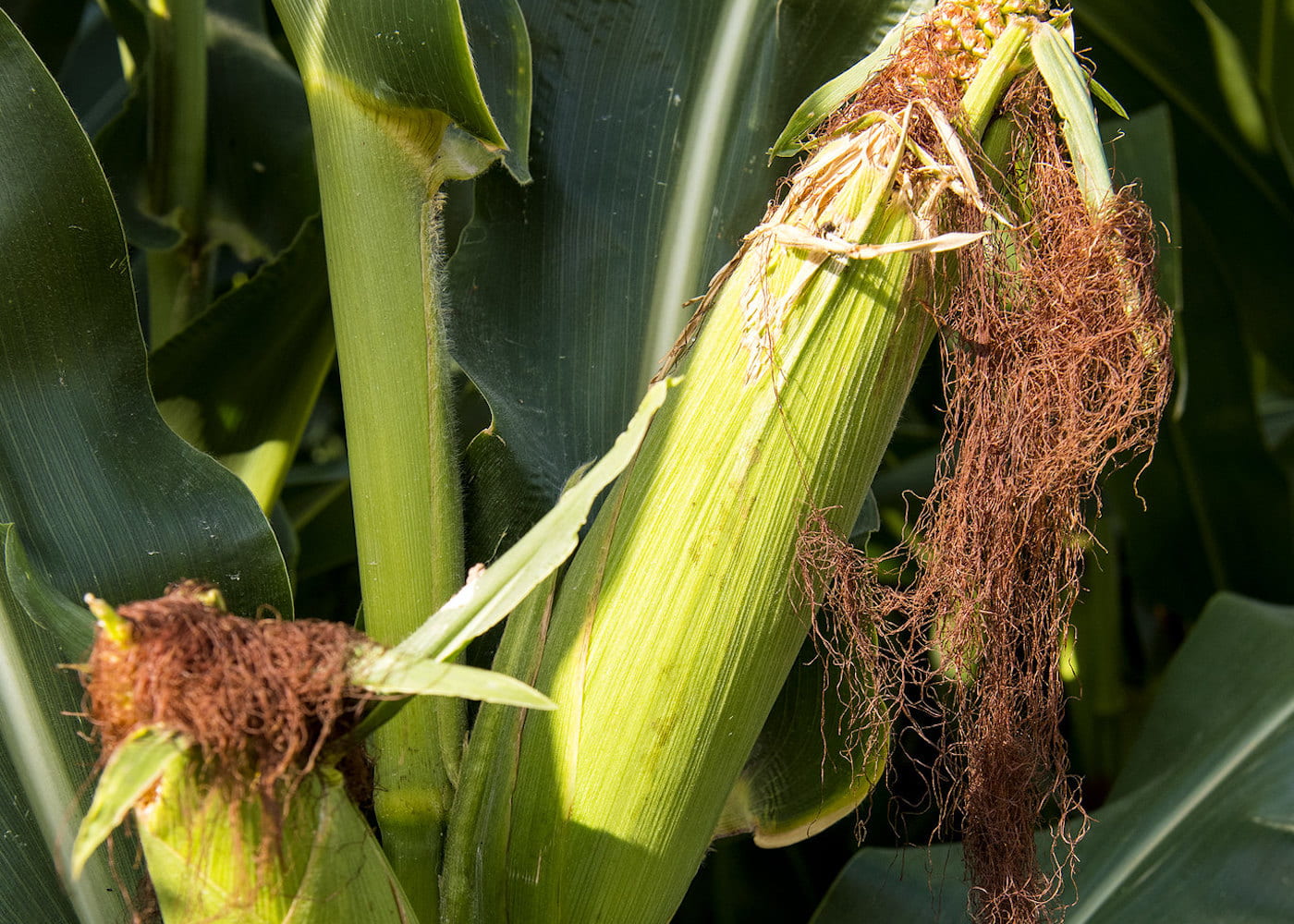RCA Trellising, Microclimate Control Bring Success in Protecting Arkansas Blackberries from Pests

The Problem
Spotted wind drosophila is an invasive insect pest that can cause millions of dollars in fruit loss by laying their eggs in ripening fruit. Keeping this pest at bay requires weekly insecticide applications throughout the entire harvest season. While a T-trellis growing system is traditionally used for growing blackberry plants, previous research had shown that the blackberry plants grown using the rotating cross-arm trellis system had fewer eggs. Researchers decided to investigate this effect of the RCA trellis system to understand why and how much it helps.
The Work
Aaron Cato, a researcher for the Arkansas Agricultural Experiment Station and extension specialist in the Horticulture Department focusing on integrated pest management, conducted a study to compare the RCA trellis and T-trellis designs in terms of pesticide spray coverage at varying spray volumes. The researchers hypothesized that blackberry plant canopies grown using the RCA trellis system would allow for greater penetration and spray coverage. The T-trellis can provide a canopy of 3 to 4 feet, whereas the RCA canopy is around 1 foot in width. Spray coverage was measured by analyzing water-sensitive spray cards.
The Results
The study found the RCA trellis system needed less water and pesticide for effective pest control, reducing costs and improving sustainability.
With the T-trellis, researchers found spotted wing drosophila larvae in one of every 10 berries, but with the RCA trellis, only one in every 40 berries were contaminated. The researchers also propose that the RCA’s canopy structure also allows for more light penetration and airflow, giving way to greater heat and less humidity, which discourages spotted wing drosophila from laying eggs. The RCA also allowed for the same spray coverage with 40 gallons of pesticide per acre as it did for 60 gallons per acre, an efficiency not matched by the T-trellis.
The Value
While the RCA trellis system is already known for helping minimize loss from extreme cold and higher fruit quality and yields, this study helps describe how RCA trellises can also help manage spotted wing drosophila. Additional work is needed to develop precise spraying guidelines to maximize RCA use, but this study indicates the RCA system can lead to environmental and economic benefits when it comes to pest management. This work also shows that insecticides aren’t the only form of effective pest control, as the canopy build of the trellis has an impact, too.
Read the Research
Impact of trellising on spray coverage in spotted wing drosophila infestation: comparing rotating cross-arm trellis to the T-trellis
Acta Horticulturae
1388, 231-240 (2024)
10.17660/ActaHortic.2024.1388.35
About the Researcher

Aaron Cato
Assistant Professor and Extension Horticulture Specialist for Pest Management
Ph.D. in Entomology, University of Arkansas
M.S. in Entomology, Kansas State University
B.S. in Biological Sciences, Arkansas State University
Other Collaborators
Co-authors of the research included Amanda McWhirt, Associate Professor and Extension Horticulture Specialist, and Lizzy Herrera and Ryan Keiffer, both Program Associates, all for the University of Arkansas System Division of Agriculture; and Erika Henderson, Extension Assistant Specialist, University of Arkansas at Pine Bluff.




